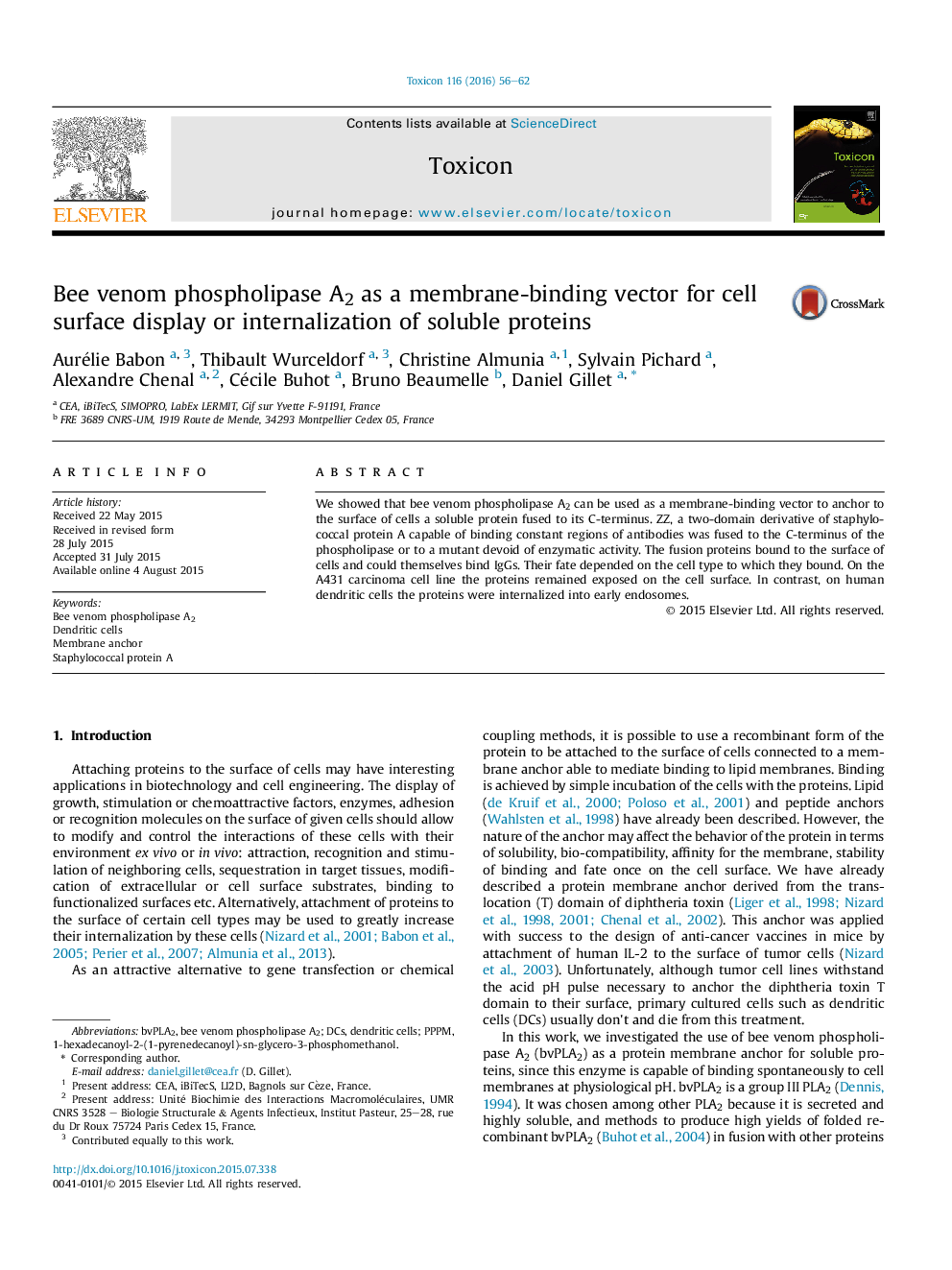| Article ID | Journal | Published Year | Pages | File Type |
|---|---|---|---|---|
| 2064204 | Toxicon | 2016 | 7 Pages |
Abstract
We showed that bee venom phospholipase A2 can be used as a membrane-binding vector to anchor to the surface of cells a soluble protein fused to its C-terminus. ZZ, a two-domain derivative of staphylococcal protein A capable of binding constant regions of antibodies was fused to the C-terminus of the phospholipase or to a mutant devoid of enzymatic activity. The fusion proteins bound to the surface of cells and could themselves bind IgGs. Their fate depended on the cell type to which they bound. On the A431 carcinoma cell line the proteins remained exposed on the cell surface. In contrast, on human dendritic cells the proteins were internalized into early endosomes.
Related Topics
Life Sciences
Biochemistry, Genetics and Molecular Biology
Biochemistry, Genetics and Molecular Biology (General)
Authors
Aurélie Babon, Thibault Wurceldorf, Christine Almunia, Sylvain Pichard, Alexandre Chenal, Cécile Buhot, Bruno Beaumelle, Daniel Gillet,
